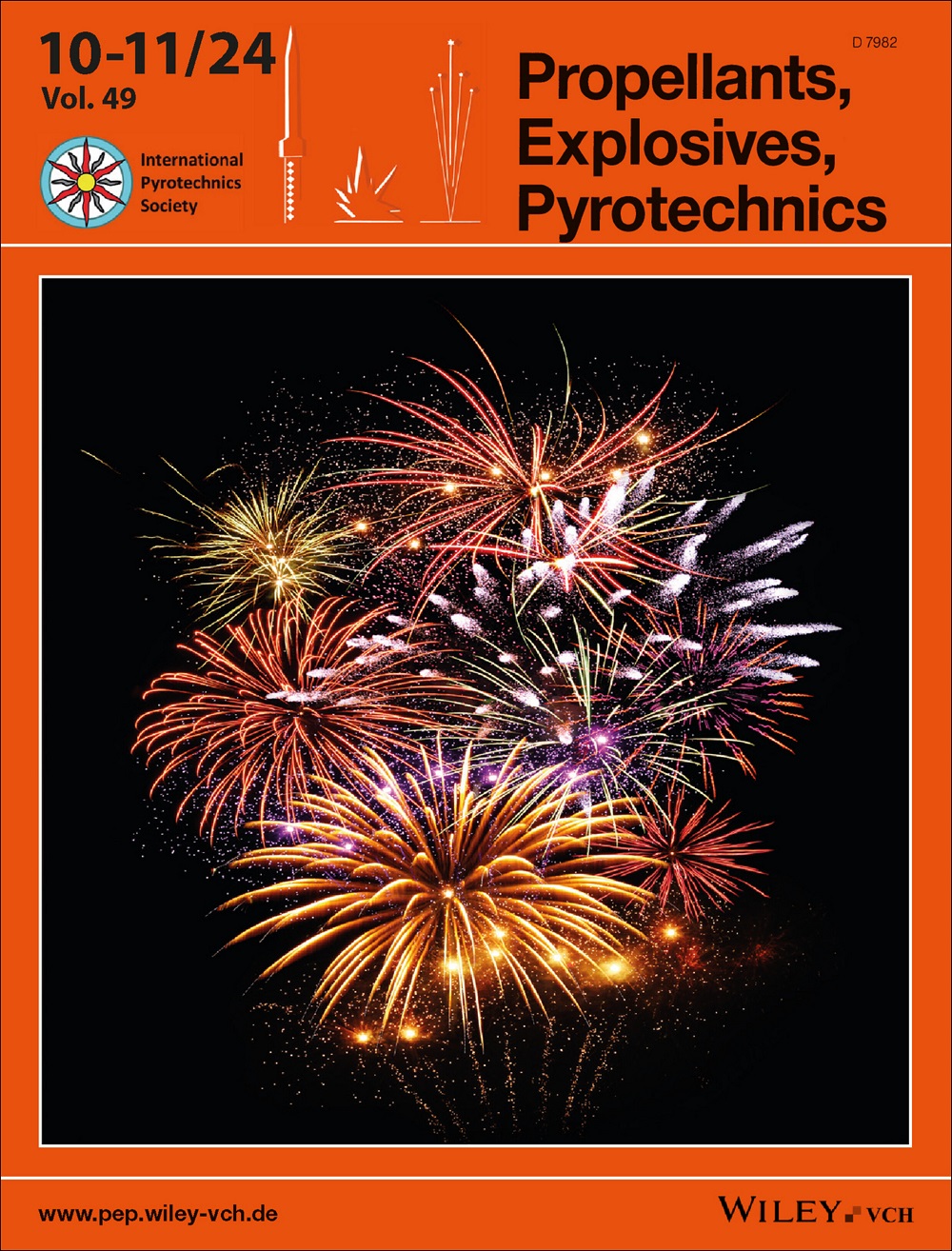3D‐DIC for mechanical characterization of composite solid propellant under uniaxial compression
IF 2
4区 工程技术
Q3 CHEMISTRY, APPLIED
引用次数: 0
Abstract
A novel experimental setup, utilizing 3D Digital Image Correlation (3D‐DIC), is employed to characterize the mechanical behaviour of composite solid propellant (CSP) under uniaxial compression at three displacement rates (1, 7, and 50 mm/min). At larger deformation, 3D‐DIC consistently shows smaller strains than nominal strain values, and this difference increases with deformation across all the displacement rates. Displacement rates significantly affect the non‐linear stress‐strain response of the CSPs. After the completion of the compression test, the specimen is unloaded, and the lengths of the unloaded specimens measured after 24 hour indicate a recovery of 90–94 % of the original length of the specimens. The recovered length increases with an increase in the displacement rate. Initially, Poisson's ratio is close to 0.5, and dilatation is zero, indicating an incompressible behaviour. However, both Poisson's ratio and dilatation increase with an increase in longitudinal strain, indicating a transition to compressible behaviour. Comparing the scanning electron microscope (SEM) micrographs of the virgin and compressive‐loaded samples, noticeable debonding is observed at the matrix‐particle interfaces.用于单轴压缩下复合固体推进剂力学特性分析的 3D-DIC
利用三维数字图像相关性(3D-DIC)的新型实验装置,以三种位移速率(1、7 和 50 毫米/分钟)表征复合固体推进剂(CSP)在单轴压缩下的机械性能。在较大的变形下,3D-DIC 始终显示出比标称应变值更小的应变,并且在所有位移速率下,这种差异随着变形的增加而增大。位移速率极大地影响了 CSP 的非线性应力-应变响应。压缩试验完成后,试样被卸载,24 小时后测量的卸载试样长度表明,试样恢复了原始长度的 90-94%。恢复长度随着位移速率的增加而增加。起初,泊松比接近 0.5,膨胀率为零,表明其行为不可压缩。然而,随着纵向应变的增加,泊松比和膨胀率都会增加,这表明已过渡到可压缩行为。比较原始样品和压缩加载样品的扫描电子显微镜(SEM)显微照片,可以观察到基体-颗粒界面有明显的脱粘现象。
本文章由计算机程序翻译,如有差异,请以英文原文为准。
求助全文
约1分钟内获得全文
求助全文
来源期刊

Propellants, Explosives, Pyrotechnics
工程技术-工程:化工
CiteScore
4.20
自引率
16.70%
发文量
235
审稿时长
2.7 months
期刊介绍:
Propellants, Explosives, Pyrotechnics (PEP) is an international, peer-reviewed journal containing Full Papers, Short Communications, critical Reviews, as well as details of forthcoming meetings and book reviews concerned with the research, development and production in relation to propellants, explosives, and pyrotechnics for all applications. Being the official journal of the International Pyrotechnics Society, PEP is a vital medium and the state-of-the-art forum for the exchange of science and technology in energetic materials. PEP is published 12 times a year.
PEP is devoted to advancing the science, technology and engineering elements in the storage and manipulation of chemical energy, specifically in propellants, explosives and pyrotechnics. Articles should provide scientific context, articulate impact, and be generally applicable to the energetic materials and wider scientific community. PEP is not a defense journal and does not feature the weaponization of materials and related systems or include information that would aid in the development or utilization of improvised explosive systems, e.g., synthesis routes to terrorist explosives.
 求助内容:
求助内容: 应助结果提醒方式:
应助结果提醒方式:


